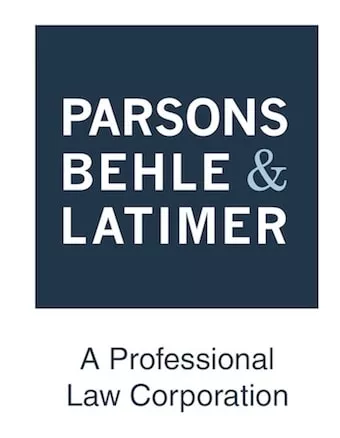For a growing company, one of the decisions a business owner must make is how they will obtain additional capital to accelerate and support the maturation of their business. One of the ways capital may be obtained is through debt finance where the company will partner with a lender and sign a loan agreement to obtain a loan. In exchange for paying the loan's fees and interest and offering the company's assets as collateral, the business receives a loan facility that will give the business access to crucial cash reserves to purchase equipment, hire more employees and allow for flexibility to make investments and grow the company.
In making these loans, lenders are taking the risk that the borrower will continue performing as a business and repay the loan. To mitigate these risks, the lender will require the company to sign a loan agreement that will contain provisions detailing the rights and obligations of the lender and the borrower. The loan agreement will include, among other things, that the borrower (a) make disclosures relevant to the business (i.e., representations and warranties), (b) make promises to take and not take various actions that could endanger the business or the payment of the loan (i.e., covenants), and (c) agree to a list of events that, upon their occurrence, would constitute as breaches under the loan agreement (i.e., events of default).
Compliance with the loan agreement's terms is crucial for the borrower to ensure it can prevent the loan going into default. This matters because if a loan goes into default, then the lender often will have the power to demand the entire loan amount be immediately paid in full, liquidate the borrower's assets or collateral or even take control of the business.
To help borrowers better understand their loan agreement, what they are certifying to by signing it and the common terms and provisions they will be required to comply with, the following details some of the key sections in a loan agreement and steps that can be taken to allow a borrower to comply with its terms. The following is not exhaustive and is not a replacement for obtaining legal counsel for the negotiation and drafting of your loan documents, but it will help provide a better understanding of what the company is committing to do and better position it to comply with the loan agreement's obligations.
Please note, often a loan agreement will not be the only document you sign. You may also sign a group of loan documents which may include: a promissory note which details the loan's payment obligations; a guaranty, in which a person or entity is guaranteeing the debt; a security agreement where the business is offering up its assets as collateral for the loan; and a variety of other ancillary documents that will govern the management of the loan. Most of the key provisions, though, will be contained in the loan agreement. Some of the most heavily negotiated sections of a loan agreement are typically its (I) representations and warranties, (II) affirmative and negative covenants, and (III) events of default.
I. Representations and warranties
In the representations and warranties section, the borrower certifies as to what the business is or is not doing or has or has not done. This may include a certification that the borrower is complying with all laws and its material agreements; that the borrower has no other debt; that there are no judgments, outstanding taxes or other liens on the borrower; etc. Often, this section will also contain schedules that allow a borrower to list exceptions anywhere it cannot certify as to a specific representation. For example, perhaps a representation reads "Borrower has no debt except those listed on Schedule 2.1." Schedule 2.1 could then include other debts that may exist, such as a separate loan agreement or perhaps a company credit card, etc. If your loan agreement does not have a schedule for exceptions and you do have something that should be disclosed to the lender, you should notify the lender and ask for the agreement to be revised to specifically include the disclosure as an allowed exception. Understanding these representations and warranties is important because the lender is relying on complete and accurate information in extending the loan. If the representations are inaccurate on the date the agreement is signed, that will constitute as a breach and be an event of default under the loan agreement.
II. Affirmative and negative covenants
During the term of the loan, the borrower will also promise to perform or not perform certain actions. These promises are called "covenants." Failing to comply with these covenants is another common loan agreement breach and can cause the loan to be in default.
Negative covenants could include: promises to not allow other lenders to obtain a security interest in the company's assets; promises to not incur or guarantee additional debt; promises to not allow a change of ownership in the company; promises to not create borrower subsidiaries without lender notice or consent; etc. These terms are often focused on mandating the borrower does not do certain things that can increase the likelihood that the loan goes unpaid.
Conversely, affirmative covenants are promises to undertake certain actions such as to periodically send financial reporting to the lender; maintain proper accounting practices; pay taxes as they come due; and comply with any financial performance covenants that may exist under the loan agreement.
Understanding these provisions is important as a borrower's ability to comply with these covenants often depends on the borrower's business type and the unique challenges of that business. If there are covenants with which the borrower cannot comply, the borrower should ask the lender to make the revisions needed in the agreement to allow for compliance. For example, perhaps there is a covenant that "the borrower shall ensure that no more than $10,000 of collateral is in a location that is undisclosed to the lender." In this hypothetical, the borrower is in the construction industry and must occasionally send large quantities of valuable equipment into the field to work on projects and jobs. If a borrower fails to understand this provision, the first time the borrower sends $50,000 worth of equipment to a job site without notifying the lender, the borrower has breached the loan agreement. Initially taking the time to understand the covenant will allow the borrower to request that the lender increase the amount of equipment allowed in the field and allow the loan agreement to accommodate the practical needs of the borrower's business so the borrower can remain in compliance.
One type of affirmative covenant that is particularly important are financial covenants. Often a loan agreement will require the borrower to comply with covenants related to its financial health, such as the degree to which the company is leveraged or its balance of cash flow to debt. These covenants can include debt service coverage ratio covenants; fixed charge coverage ratios; minimum liquidity requirements; debt-to-net-worth covenants; etc. These financial covenants will be used by the lender to measure the borrower's financial health during the term of the loan. Often, this is done each time the borrower sends the lender its financial reporting, which can be monthly, quarterly or annually. Depending on how cash flow enters the company, the nature of its industry and the life-stage of the company, certain financial covenants within the loan agreement may or may not make sense. Taking the time to understand and negotiate these provisions so they align with your business's operations and cash flow system is crucial to give the lender a realistic view of the borrower's financial health and allow for the borrower's realistic compliance with the loan agreement over the life of the loan.
III. Events of default
The events of default section contains a list of criteria that, upon any one of them happening, will cause the loan agreement to be breached and will often give the lender the power to call the loan into default and accelerate the payment of the loan. Examples of common events of default include (a) the borrower failing to pay the loan when due, (b) representations and warranties being untrue as of the signing of the loan agreement, (c) the borrower failing to comply with its affirmative or negative covenants, (d) the business going into bankruptcy, (e) the business allowing other lenders to claim a lien on its assets, or (f) the death of a guarantor. In addition to listing what can cause breaches, the events of default will also often contain what are called "cure periods." Cure periods are windows of time that a borrower will be granted to "cure" or fix the default. If the borrower does so within the time allotted, the loan agreement will not be in breach, and the borrower will maintain good standing. These cure periods can often be negotiated and can give the borrower crucial time to remedy any breaches and avoid a default on the loan. Taking the time to understand what the loan agreement says and making the requests needed to properly run the business will give the borrower the runway it may need to maintain good standing with its lender. For example, perhaps any liens being placed on your assets is an event of default and the loan agreement gave no cure period for that default. Requesting a 30-day or 15-day cure period to remove any liens that may be placed on the borrower's assets could be the difference between compliance and breach. Since the events of default outlines the triggers that will empower the lender to act against the borrower, giving careful consideration to its contents will be essential to facilitate the borrower's success under the loan.
Understanding and negotiating a loan agreement is difficult – its provisions are often complicated and not designed to accommodate your business or industry. Taking the time to understand and negotiate the loan agreement can be the difference between success or failure in your business. Because this process is challenging, and the preceding is just a high-level overview, it is always recommended that you obtain legal counsel when negotiating your loan documents.
Originally published by Utah Business Magazine.
The content of this article is intended to provide a general guide to the subject matter. Specialist advice should be sought about your specific circumstances.

